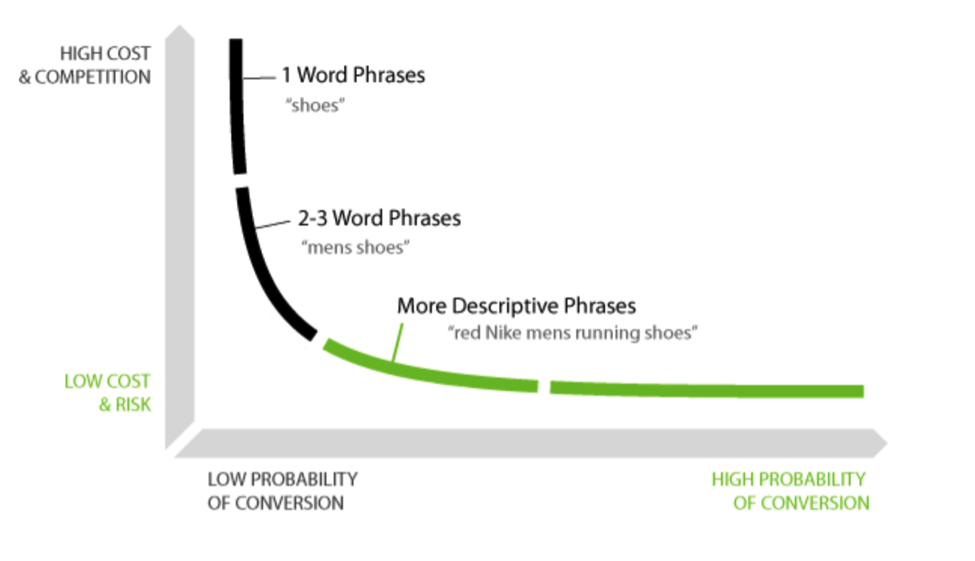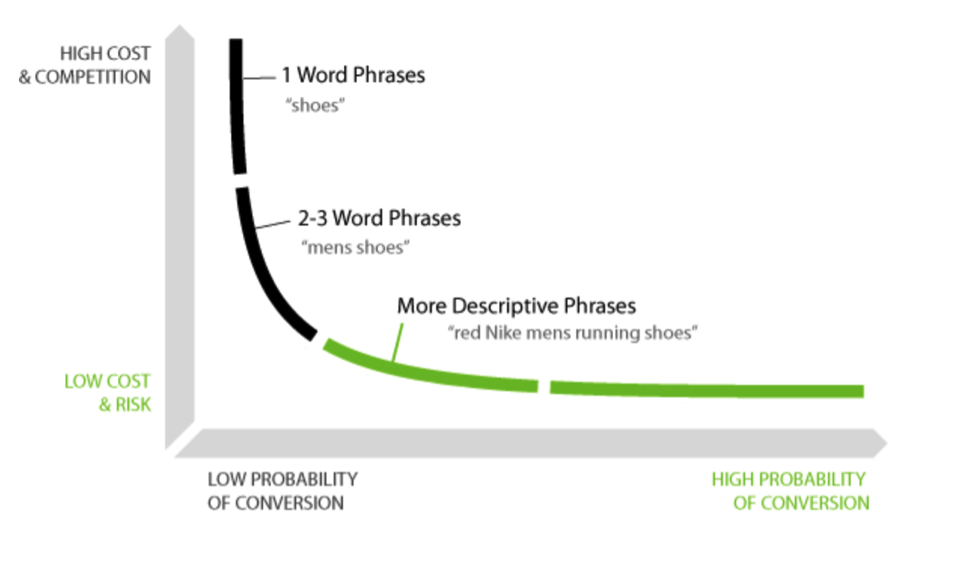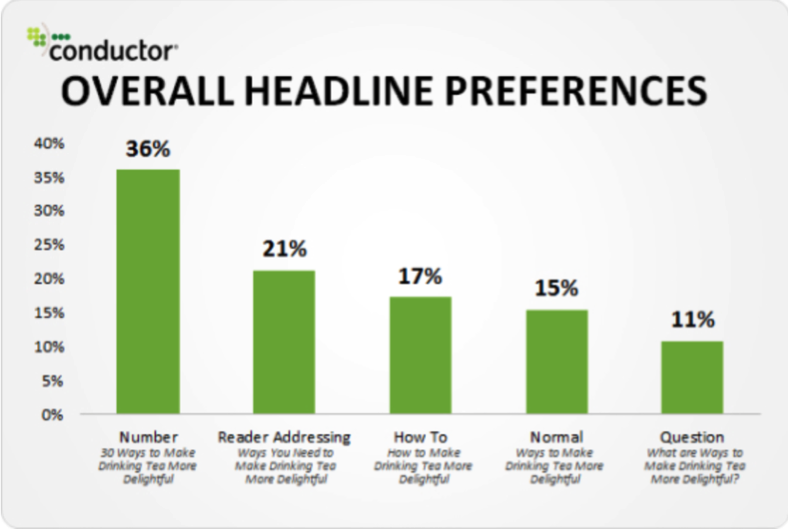
A Guide to Generating Traffic from Long-Tail Keywords
How about I tell you an amazing tip to dramatically increase your search engine traffic?
Focus on long-tail keywords.
You see, most bloggers and website owners only pay attention to head (short) keywords. However, they should be doing the exact opposite.
There is so much competition for head keywords that you will almost never rank for them high enough in the search engine results pages. And because of that, you will never get a substantial amount of organic traffic.
Moreover, even if you do get a good amount of traffic, the conversion rates will be so low that the sales won’t be even able to cover your SEO investment.
Here is a simple diagram that explains the differences between “head” keywords and “long-tail” keywords. (Click the image to enlarge it.)
As you can see, shorter keywords have higher competition and lower conversation rates. On the other hand, long-tail keywords have higher conversion rates and lower competition.
In case you are still not convinced, here’s a quick case study for you:
Marcus Sheridan is the founder of River Pools and Spas. He realized that his industry was not leveraging content marketing properly, so he targeted a long-tail keyword “Problems with Fiberglass Pools”.
That webpage is ranked #1 on Google for its long-tail query and has brought over 5,000 views soon after it was published.
You can achieve the same kind of result with long-tail keywords.
Here are a few tips on how to get more traffic with long-tail keywords:
1. Identify Potentially Profitable Keywords
The first step is to obviously find potentially profitable keywords in your niche.
You can always use the free keyword tools. For example:
Now, how do you define a potentially profitable keyword?
It should have:
1. A relatively higher search volume. For instance, 700 to 1,600 searches per month is a good keyword volume.
2. It should have “low” SEO competition. If you can’t find any such keyword in your industry, go for a slightly more competitive keyword. Avoid the most highly competitive keywords in any scenario. (You can use a tool like Moz to work out SEO competition for any given keyword)
3. Look at the CPC of your main keywords. It will give you a good idea on how profitable those keywords maybe.
2. Focus on User Intent
As Google is evolving and improving as a search engine, user intent is becoming the next big thing.
Simply put, user intent focuses on what a Google user is trying to search, instead of what she is writing in the search engine. It is the intent behind the search that Google is giving more attention to.
For instance, here is an example:
In this example, when I search for the keyword “arthritis hand”, I found that the 2nd highest result on Google’s 1st page is about “7 hand exercises to ease arthritis pain”.
This is because, most likely, the intent behind a user searching for the keyword “arthritis hand” is to look for ways to ease the pain and find a few exercises.
When you are searching for long-tail keywords, keep this tip in your mind and you will find lots of potential ideas.
3. Use Quora to Find Ideas
You must have heard about Quora, right?
It is a wonderful Q & A platform that has thousands and thousands of questions about almost every topic under the sun.
When you need popular ideas to combine with your head keywords — and make them long-tail keywords — Quora is the place to visit.
You will find lots of questions in your industry with many viable ideas. Combine those keywords with your head keyword and you have come up with a potentially profitable and popular long-tail keyword.
Make sure to verify those new long-tail keywords with keyword tools to confirm their popularity.
4. Write Clickable Headlines
This blog post is about generating traffic from long-tail keywords, and merely searching for long-tail keywords is only half the job done.
In order to actually drive traffic to your website, you also need to write clickable headlines — headlines that are interesting, engaging and lure the readers in.
One small tip is to add “numbers” in your headlines. According to a recent study, internet users love numbers and that makes a headline with numbers instantly more clickable.
See this:
As you can see in the above image, most users prefer numbers in headlines. A lot of the bloggers and business owners believe that questions make a headline more clickable.
Yes, questions are engaging, but when it comes to overall headline preferences and increasing clickability, nothing beats numbers.
5. Edit the Meta Description
Here is a brief little tip to end this topic.
When you are trying to generate traffic through long-tail keywords, don’t forget the importance of Meta Description.
Don’t know what that is?
It is that small little description that goes along with your search engine result. Here is an example.
Do you see the description that is underneath the title? This is the description that you should focus one.
There are two rules you must follow if you want to leverage this:
1. Make sure it’s interesting, engaging and descriptive. It should have enough power to encourage clicks.
2. Equally as important, it should have your long-tail keyword in it.
A lot of the digital marketers do not pay any attention to optimise this description. They wrongly assume that the Meta description does not matter at all anymore. However, this is not true. It still matters and if you leverage it properly, you will see better results and more organic traffic.












I was conducting research about step-by-step guide. It reveals your long-tail keyword phrase for new business development guide in related keyword search term niche.